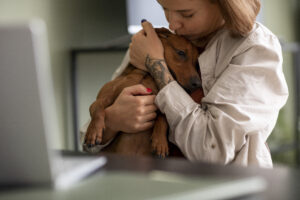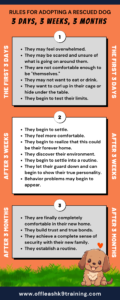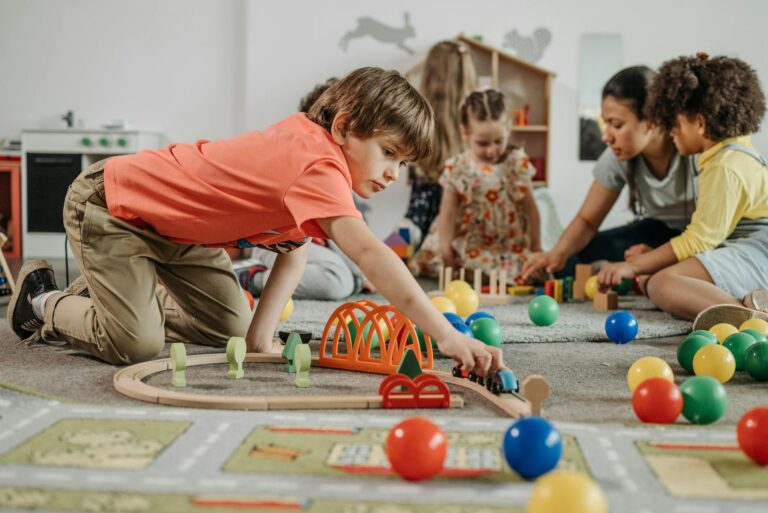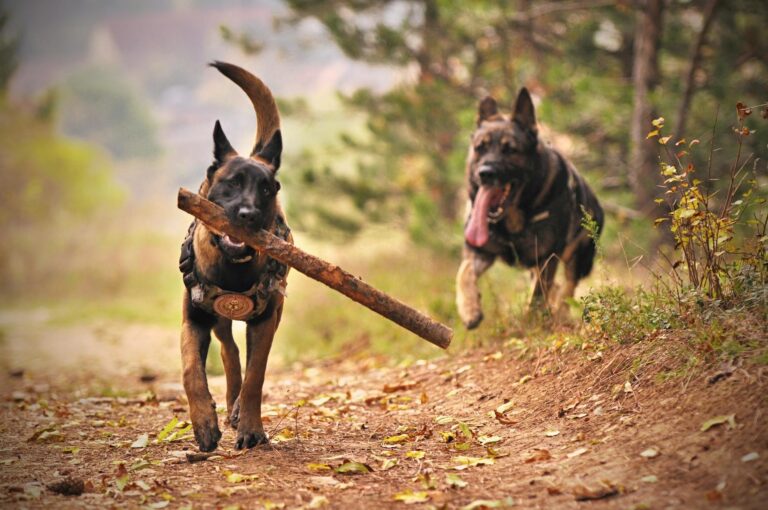How To Train A Rescue Dog: Tips For Success
Training a rescue dog can often feel like attempting to unlock a mysterious vault without a key. Many rescue dogs come from challenging backgrounds, and understanding their unique needs is crucial for successful training. Interestingly, studies show that around 50% of rescue dogs experience behavioral issues, which underscores the importance of a tailored approach.
To train a rescue dog effectively, it is essential to begin with establishing trust and setting consistent routines. Historically, consistent routines have proven crucial in providing a sense of security for dogs who have faced inconsistent environments. Moreover, using positive reinforcement, such as treats and praise, significantly increases the likelihood of success, as evidenced by various canine behaviorist studies.
- Establish a consistent routine for feeding, walks, and playtime to create a stable environment.
- Build trust through positive reinforcement; reward good behavior with treats and praise.
- Teach basic commands like “sit,” “stay,” and “come” with consistency and patience.
- Address behavioral issues early with targeted training techniques or professional help if needed.
- Incorporate mental enrichment activities such as puzzle toys and scent games to stimulate your dog mentally.

How to Train a Rescue Dog: Tips for Success
Training a rescue dog begins with setting a consistent routine. Dogs thrive on predictability, and having regular meal times, walks, and play sessions helps. A solid routine gives a sense of security to the dog, particularly for those who have faced instability. It’s useful to maintain a daily schedule to build trust. Eventually, your dog will expect and enjoy these regular activities.
Building trust with a rescue dog may take some time, but it’s essential. Spend quality time with your dog and use positive reinforcement. Offering gentle touches, treats, and kind words can help. Understand that a rescue dog might have fears or anxieties. Patience is key during this period.
Training basic commands is the next step. Start with simple commands like “sit,” “stay,” and “come.” Use treats and praises to reward good behavior. Consistency is critical for learning. Keep training sessions short but frequent to keep your dog engaged.
An imperative part of training is addressing behavioral issues promptly. Rescue dogs may exhibit undesirable behaviors due to past experiences. Consider using a clicker or specific training tools designed for behavior correction. If problems persist, seeking advice from a professional trainer can be helpful. Supportive resources can make a significant difference in your dog’s progress.
Bringing Home a Rescue Dog (6 Rescue Dog Tips for your First Week Home) //THE KIND CANINE

Step 1: Setting a Routine
Establishing a routine is the first step in training a rescue dog. Dogs feel secure when they know what to expect each day. Make sure to set regular times for feeding, walks, and playtime. This helps the dog adapt to its new environment. Consistency in these activities provides comfort and predictability.
Feeding schedules are particularly important. Feeding your dog at the same times each day helps in regulating their digestion. It also gives them something to look forward to. Similarly, regular walks are essential. They provide exercise and help in socializing your dog.
When it comes to setting a routine, be mindful of your dog’s past. Some rescue dogs could have faced irregular meal times and lack of walks. Gradually introduce them to this new structured life. Observe how they respond and adjust accordingly.
Include training sessions in the routine. Short sessions of 10-15 minutes are best. This keeps your dog engaged and not overwhelmed. Use positive reinforcement like treats and praises. Over time, your dog will understand and feel comfortable with the daily schedule.
Step 2: Building Trust
Building trust with a rescue dog starts by creating a safe and calm environment. This means avoiding sudden loud noises and chaotic surroundings. Spend quiet time with your dog to help them feel secure. Being patient and consistent reassures the dog. Over time, they will begin to trust you more.
Positive reinforcement is key in building trust. Use treats, praise, and gentle petting to reward good behavior. Avoid punishments, as they can create fear and mistrust. Engage in activities your dog enjoys. This helps them associate you with positive experiences.
Understand your dog’s body language. Signs like a wagging tail or relaxed posture mean your dog is comfortable. If they show signs of fear, like hiding or shaking, give them space. Respecting their boundaries is crucial in building trust.
Introduce new experiences gradually. Start with short, positive outings like a walk in the park. Gradually introduce them to new people and places. Keeping these interactions positive helps reduce anxiety. Trust-building is a gradual process, but with patience, your dog will feel more at home.
Step 3: Mastering Basic Commands
Teaching your rescue dog basic commands is critical for good behavior and safety. Start with easy commands like “sit.” Hold a treat close to your dog’s nose and move your hand up, allowing their head to follow the treat and causing their bottom to lower. Once they’re in a sitting position, say “sit,” give them the treat, and share praise. Practice this several times a day.
Next, move on to the “stay” command. Ask your dog to sit first. Open your palm in front of you and say “stay.” Take a few steps back, then return with a treat if they stay put. Gradually increase the distance and duration for better results.
Another important command is “come.” Put a leash on your dog and gently pull it towards you while saying the word “come.” When they reach you, reward them with a treat. Practice this in different environments. It helps in situations where you need your dog to come to you quickly.
Learning the “down” command can also be useful. Start from the “sit” position, hold a treat close to the ground, and move it away from your dog. As they follow the treat, their body will lower. Once they are fully lying down, say “down” and give the treat.
Consistency is key in mastering these commands. Ensure every family member uses the same words and techniques. Reinforce good behavior with rewards and praises. With time and effort, your dog will become more responsive.
Keep training sessions short, around 10-15 minutes, to prevent your dog from getting bored or frustrated. Regular practice will help your dog remember the commands better. Make sure to practice in various settings to generalize the behavior.
Step 4: Using Positive Reinforcement
Positive reinforcement is a powerful tool in training your rescue dog. This method focuses on rewarding good behavior rather than punishing bad behavior. It’s effective because dogs naturally repeat actions that result in positive outcomes. For example, giving treats when your dog follows a command encourages them to do it again. Praise and petting also serve as excellent rewards.
There are various ways to use positive reinforcement effectively. Treats are the most common form, but verbal praise like “good job!” works wonders too. Some dogs respond well to toys or extra playtime. The key is to find what motivates your dog most. Consistency in rewards ensures quicker learning.
Timing is crucial in positive reinforcement. Clickers can be helpful because they mark the exact moment your dog performs the desired behavior. Follow the click with a treat or praise immediately. This helps your dog associate the click sound with positive feedback.
Positive reinforcement also works in correcting unwanted behaviors. For example, if your dog jumps on guests, reward them when they greet politely instead. By doing this, you’re teaching them the behavior you want instead of just focusing on what they shouldn’t do. This makes training a more positive experience for both you and your dog.
Keep the training sessions short and upbeat. Dogs can lose interest if sessions are too long. Aim for 10-15 minutes per session. Adjust the duration based on your dog’s attention span and mood. Regular, enjoyable sessions ensure better progress.
Using positive reinforcement not only trains your dog effectively but also strengthens the bond between you. Your dog learns to trust you and looks forward to training. This method promotes a happy and cooperative relationship, which is crucial for successful training.
Step 5: Dealing with Behavioral Issues
Addressing behavioral issues in rescue dogs can be challenging but is essential. Start by identifying the behaviors that need correction, such as barking, chewing, or aggression. Observing the triggers for these behaviors can give you valuable clues. Sometimes, they stem from fear or past trauma. Understanding the root cause is the first step in resolving these issues.
One effective method is using counter-conditioning techniques. This involves changing your dog’s negative reaction to a positive one. For instance, if your dog is afraid of other dogs, reward them with treats when they remain calm in the presence of another dog. Over time, they will associate the presence of other dogs with treats instead of fear. The same method can apply to various other unwanted behaviors.
It’s crucial to stay patient and consistent. Behavioral issues won’t disappear overnight. Create a training plan and stick to it. Consistency helps your dog understand what is expected of them. Small, incremental changes can lead to significant improvements over time.
Some behavioral problems may require professional intervention. A certified dog trainer or a veterinary behaviorist can offer specialized guidance. They can create a customized training program for your dog’s specific needs. Consulting an expert can be beneficial if your dog’s behavior doesn’t improve with standard methods.
Maintaining a calm and controlled environment is also helpful. A chaotic or stressful setting can exacerbate behavioral issues. Ensure your dog has a safe space where they can retreat and feel secure. Use this space to calm them down if they become overwhelmed.
Remember, positive reinforcement should continue alongside any correctional techniques. Reward your dog for good behavior consistently. This reinforces the behaviors you want to see and helps reduce unwanted actions. Building trust and providing stability are key elements in resolving behavioral issues.

Beyond Basic Training: Enrichment for Rescue Dogs
Beyond basic training, enrichment activities can significantly improve a rescue dog’s well-being. Enrichment keeps your dog mentally and physically stimulated. This is crucial for preventing boredom-related behaviors. Engaging activities can include puzzle toys, agility exercises, and scent work. These activities not only entertain but also challenge your dog’s mind.
Puzzle toys are excellent for mental stimulation. They come in various types that let you hide treats or kibble inside them. Your dog has to figure out how to get the reward, which keeps them busy and engaged. This is especially helpful on rainy days when outdoor play isn’t possible. Regular use of puzzle toys can enhance problem-solving skills.
Agility exercises offer both physical and mental benefits. You can set up a simple agility course in your backyard using items like cones, tunnels, and jumps. Guiding your dog through the course helps build their confidence and strengthens your bond as a team. Changing the course layout regularly keeps it interesting for your dog.
Scent work taps into a dog’s natural ability to use their nose. Hide treats around the house or yard and encourage your dog to find them using their sense of smell. This activity not only provides exercise but also satisfies their instinctual need to search and find food. Scent games can be especially rewarding for dogs with high energy levels.
Group classes or playdates with other dogs are another way to provide enrichment. Social interaction with other dogs improves social skills and reduces anxiety in new environments. Look for local groups that organize such events regularly. Proper supervision ensures safe interactions among the dogs.
Outdoor excursions like hiking or visitations to pet-friendly parks introduce new sights, smells, and sounds to your dog’s routine life. These outings offer much-needed stimulation and exercise while also serving as bonding time between you and your dog.
Overcoming Anxiety in Rescue Dogs
Overcoming anxiety in rescue dogs begins with understanding the triggers. Common triggers can include loud noises, unfamiliar surroundings, or sudden movements. Knowing what causes your dog’s anxiety helps in creating a calming environment. Simple changes, like a quiet room or calming music, can make a difference. Gradually exposing your dog to these triggers can reduce anxiety over time.
Creating a safe space is vital. A designated area equipped with your dog’s favorite toys, a comfortable bed, and maybe an item of your clothing can provide comfort. This space acts as their sanctuary where they can retreat when they feel stressed. Regularly encouraging your dog to use this space reinforces it as a safe zone. This helps in reducing overall anxiety levels.
Using positive reinforcement can also aid in easing anxiety. Rewarding calm behavior with treats or praise teaches your dog that being calm brings positive outcomes. Consistency is crucial for this method to work effectively. Over time, your dog will begin to associate calm behavior with positive rewards. This makes anxiety-inducing situations easier to manage.
Anxiety wraps or calming vests can be a tangible aid. These wraps apply gentle, constant pressure to your dog’s body, mimicking the feeling of being held. This can produce a comforting effect similar to swaddling an infant. Many pet owners have found success using these tools in stressful situations.
Consulting with a veterinary behaviorist might be necessary for severe cases. They can provide specialized strategies and possibly prescribe medications to help manage your dog’s anxiety. Medications are usually a last resort but can be effective in extreme cases. Always follow professional advice when using such treatments.
Regular exercise and mental stimulation also play a significant role in reducing anxiety. Activities like walking, playing fetch, or puzzle toys can divert your dog’s focus away from their stressors. Keeping your dog physically and mentally active helps them to stay engaged and less likely to dwell on anxiety-inducing triggers.
Coping with Rescue Dog’s Past Trauma
Coping with a rescue dog’s past trauma requires patience and understanding. Many rescue dogs have experienced neglect or abuse, leading to deep-seated fears. Recognize that healing takes time and cannot be rushed. Create a stable, loving environment where your dog feels safe. Consistency and routine help foster a sense of security.
Gentle interactions are essential. Approach your dog slowly and avoid sudden movements. Let them come to you on their terms. Use calming tones and gentle touches. Building trust through positive experiences can lead to gradual improvements.
Incorporating a variety of enrichment activities can also aid in recovery. Activities like scent games, puzzle toys, and gentle playtime provide mental stimulation. They help divert your dog’s focus from traumatic memories. Regularly engaging in these activities can improve their overall mood and reduce stress.
Another technique is desensitization. Gradually expose your dog to mild versions of their fear triggers in a controlled environment. Over time, increase the exposure as they become more comfortable. Pair these exposures with treats or praise. This method helps your dog learn that previously scary situations are not as threatening.
Behavioral therapy and professional guidance can be highly beneficial. In severe cases, consult a veterinary behaviorist or an animal psychologist. They can develop tailored strategies to address specific issues. Therapy sessions often combine training and counseling to improve the dog’s mental health.
Guardianship and support from all family members are crucial. Everyone should follow the same approach to handling the dog’s trauma. Unified efforts ensure consistency in the dog’s experience. This collective support significantly contributes to the healing process.
When to Seek Professional Help for Rescue Dog Training
Determining when to seek professional help for rescue dog training can be crucial for your dog’s well-being. If your dog exhibits aggressive behavior that you can’t control, this is a clear sign. Aggression towards other dogs or humans should not be ignored. Professional trainers have the skills to manage and mitigate these behaviors. They can create a safe environment for both the dog and the people around it.
Persistent behavioral issues like excessive barking, chewing, or separation anxiety may also require professional intervention. If these problems don’t improve with basic training and positive reinforcement, a trainer can offer advanced techniques. Sometimes, underlying issues such as fear or trauma may be the cause. A professional can identify and address these root causes effectively.
Difficulty in socializing with other dogs or people is another reason to consult a professional. Rescue dogs often lack proper socialization, making them fearful or anxious in new settings. Trainers can provide controlled environments for social practice. This helps your dog gain confidence and improves their social skills.
If you feel overwhelmed by the training process, seeking help is a good idea. Trainers can provide personalized coaching and support. They can guide you through tailored training programs that meet your dog’s specific needs. Professional guidance reduces your stress and increases the success rate of training.
Health-related behavioral issues might also need professional attention. Sometimes behavior changes are due to medical conditions. A veterinary behaviorist can diagnose any health problems that could be impacting your dog’s behavior. They can recommend treatments or medication if necessary.
Consistency in training is essential but can be hard to maintain. Professional trainers ensure a constant approach, which is critical for the dog’s learning. They offer expertise and resources that might not be available to you. This enhances the training experience and leads to better outcomes for your rescue dog.
Frequently Asked Questions
Below are some common questions about training rescue dogs. These answers aim to guide you through various aspects of this rewarding experience.
1. How can I help my rescue dog adjust to its new home?
Helping your rescue dog adjust involves creating a calm, consistent environment. Establish a daily routine for feeding, walking, and playtime to provide structure and stability. This consistency helps the dog understand what to expect, reducing anxiety and letting them settle in faster.
Additionally, provide a safe space like a cozy bed or crate where your dog can retreat when feeling overwhelmed. Spend quality time bonding with gentle petting and positive reinforcement to build trust and create positive associations with their new home.
2. What are the best ways to socialize a rescue dog?
Socializing a rescue dog starts with gradual exposure to different environments, people, and animals. Begin with short, positive interactions that don’t overwhelm the dog. Use treats and praise during these sessions to create positive experiences.
You can also enroll in obedience classes where dogs learn social skills in a controlled setting. Remember, patience is key; each dog has its own pace for socialization. Always observe your dog’s reactions and adjust accordingly.
3. How do I manage separation anxiety in my rescue dog?
Managing separation anxiety involves building up your dog’s tolerance to being alone gradually. Start by leaving your dog alone for short periods and slowly extend the duration as they become more comfortable. Providing interactive toys or treat puzzles can keep them occupied while you’re away.
Create a calm departure routine without emotional goodbyes which might heighten their anxiety levels. Consider using calming aids like anxiety wraps or consult your vet for additional strategies if needed.
4. What diet is best for a recently adopted rescue dog?
The best diet for a newly adopted rescue dog should be nutritious and balanced according to age, size, and health condition. Consult your veterinarian for recommendations tailored specifically for your dog’s needs.
Avoid sudden changes; transition gradually into their new food over several days while monitoring for any adverse reactions.
This approach helps prevent digestive issues while allowing you to identify any food allergies or sensitivities that may exist. Fresh water should always be available alongside regular feeding schedules ensuring optimal hydration levels too.
5.What signs indicate that professional help may be needed?
If behavioral issues persist despite consistent training efforts – such as aggression towards people/dogs excessive barking/chewing/self-injury etc- it could signal underlying problems needing expert intervention professional trainers/veterinary behaviorists address specific challenges holistically by developing personalized plans incorporating advanced techniques/therapies/medications offering higher success rates thus improving overall well-being & enhancing human-animal bond significantly
Conclusion
Training a rescue dog requires patience, consistency, and a deep understanding of their unique needs. Establishing routines, building trust, and using positive reinforcement are fundamental steps. Addressing behavioral issues promptly ensures a well-adjusted, happy dog.
Rescue dogs often bring immense joy and loyalty into our lives. With the right training and care, they can overcome their past traumas and thrive in a loving environment. Professional help is always an option if challenges arise, ensuring both you and your dog can enjoy a fulfilling relationship.





